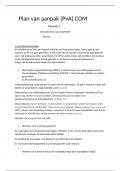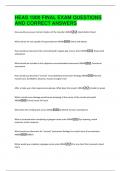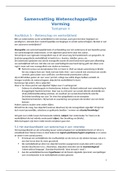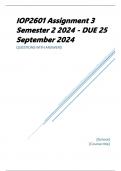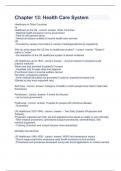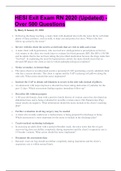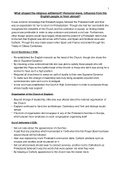IAS 12 INCOME TAXES
HOW TO CALCULATE DEFERRED TAX:
TEMPORARY DIFFERENCES
CA in the accounts = asset / (liability) x/(x)
Less tax base (eg. cost less tax allowances) (x)
Temporary differences (TD) x/(x)
• +ve TD = Taxable TD = Deferred tax liability If no DT balances from previous years: Recognise future tax charge or tax relief
• -ve TD = Deductible TD = Deferred tax asset on the gains or losses as follows:
If there was an opening DTA or DTL:
1. Calculate YE deferred tax (temp differences
x tax rate)
2. Compare to opening deferred tax
3. Journal = increase / decrease in the year
(may need to allocate P/L and OCI)
• Follow tax rules in Q
• If in doubt tax base is probably zero
• Use next year's TR if it's changing
• Don't discount
• Can only offset if: (a) Legal right to set off CT,
A&L relate to same tax authority
EXAMPLE 1: DEFERRED TAX ILLUSTRATION
"Data: 20X2 20X1 EXAMPLE 2: INCOME TAXES
PPE (cost £100k on 1-1-X1) "Co A pays tax to the Government of Utopia at a rate of 22%. On 1-Jan-X6 Co A acquired equipment for
- Carrying amount 80,000 90,000 Depn: 10k i.e. £30,000. In the FS it is being depreciated over its UEL of 4 years on a straight-line basis. Tax depreciation is
- TWDV 49,000 70,000 (90k - 80k)
calculated at 27% on a reducing-balance basis.
Accrued income (not taxable until received) 25,000 -
Provision (not tax deductible until expense incurred) (5,000) -
On 1-Jan-X3 Co A acquired a property for £40,000. Both accounting depreciation and tax depreciation is
Tax rate 30% 30%"
over 25 years on a straight-line basis.
Calculation of deferred tax temporary differences and deferred tax liability:
Item Accounting CA Tax base Temporary Difference Determine the DTL at 31-Dec-X6 in accordance with IAS 12."
PPE 80,000 49,000 31,000
TD +ve: DTL At 31-Dec-X6:
Accrued income 25,000 0 25,000
Provision (5,000) 0 (5,000) TD -ve: DTA CA of equipment [£30k - depn (30k x 1/4)] 22,500
PPE
51,000 TD -ve: DTL Tax base [£30k - depn (30k x 27%)] (21,900)
DTL @ 30% (15,300) Taxable temporary difference 600
DTL @ 22% (132)
Calculation of deferred tax charge to profit or loss in 20X2:
There is no deferred tax in respect of the property as its carrying amount is equal to its tax base.
The deferred tax liability brought down from 20X1 was £6,000 [(90,000 - 70,000) x 30%]
DTL b/d 6,000
Charge to P/L (bal) 9,300 EXAMPLE 3: INCOME TAXES
DTL c/d 15,300
"Co A pays tax to the Government of Utopia, at the rate of 22%.
DR Tax Charge (P/L) 9,300
CR DTL (SOFP) 9,300 On 1-Jan-X6 Co A acquired equipment for £30,000. In the FS it is being depreciated over its UEL of 4 years
on a straight-line basis. Tax depn is calculated at 27% on a reducing line basis. The DTL of the plant at 31-
Effect on profit or loss in 20X2: Dec-X6 was £132.
Profit before adjustments 100,000
Depreciation (10,000) On 1-Jan-X3 Co A acquired a property for £40,000. Both accounting depreciation and tax depreciation is
Accrued income 25,000 over 25 years on a straight-line basis. On 31-Dec-X7, the property was revalued to £50,000 with no change
Provision (5,000) to its UEL . The revaluation is not recognised for tax purposes.
110,000
Current tax [100k - (70k TWDV @ 30%)] (23,700) Determine the DTL at 31-Dec-X7 and the charge of credit in profit or loss for the YE 31-Dec-X7."
Deferred tax (9,300)
Profit for the year 77,000 At 31-Dec-X7:
CA of equipment [30k - depn (30k x 2/4)] 15,000
Tax base [30k x (100% - 27%)^2] (15,987)
PPE REVAL
Total tax: 23,700 + 9,300 = 33,000 which is now matching to 110,000 x 30% = 33,000
Deductible tax asset (987)
DTA @ 22% 217
CA of the property after revaluation 50,000
Tax base [40k - (40k x 5/25 years)] (32,000)
Taxable temporary difference 18,000
DTL @ 22% (3,960)
At Co A pays all its tax to a single authority, it must offset deferred tax assets and liabilities.
At 31-Dec-X7 there is a DTL of £(217 - 3,960) = £3,743
Deferred tax liability at 31-Dec-X6 132
Deferred tax liability at 31-Dec-X7 3,743
Increase 3,611
Of the increase in DTL of £3,611, £18,000 x 22% = £3,960 relates to the property revaluation and is
recognised in OCI. This leaves £3,611 - £3,960 = £(349) to be credited to profit or loss.
, EXAMPLE 4: MULTIPLE ISSUES (PPE & LOSSES)
"FD has provided the following deferred tax computation and notes:
Taxable temporary difference:
CA of P&E at 31-Jul-X4 12,800
TB of P&E at 31-Jul-X4 (8,600)
Taxable TD on P&E 4,200
DTL @ 20% 840
DTA in respect of cfwd trading losses (400)
Deferred tax balance 440
Notes:
• Accounting profits equal taxable profits except in respect of depreciation.
• Co A made a tax loss of £2m in the YE 31-Jul-X4. Under current tax legislation this loss
can be carried forward indefinitely. Co A has prepared a budget for 20X5 and 20X6
which shows taxable profits of £500k and £750k. No projections are available after this
date due to the uncertainty of tax law.
• Co A revalued its head office building on 31-Jul-X4. The revalued CA at 31-Jul-X4 was
£5m and its tax base was £4m. Gains on property are charged to tax at 20% on disposal.
However, Co A has no intention of selling its HO therefore no DTL has been recognised.
• I have agreed the CA of P&M to the FS and the tax base to the company tax return.
The offsetting of DTA and liabilities is permitted by IAS 12 provided that the entity has a
legally enforceable right to offset current tax assets against current tax liabilities - this
appears to be the case but further audit procedures should be carried out to confirm this.
A TD arises with the upward revaluation of the HO building. This should be provided for in full
and therefore the following adjustment is proposed.
DR OCI £200k [(£5m - £4m) x 20%]
CR DTL £200k
Unused tax credits cfwd against taxable profits will give rise to a DTA to the extent that profits
will exist against which they can be utilised.
The existence of unused tax losses, however, is strong evidence that future taxable profits may
not be available. The DTA should be limited to the likely future profits - £1,250,000 (£500k +
£750k) x 20% = £250k
DR Deferred tax: profit or loss £150k (440k - 250k = 150k)
CR Deferred tax liability £150k
Therefore the total DTL at YE is £790k (£200k + £250k + £440k).
"Deferred taxes in the deal-date SOFP extract were calc. using TR of 30%. However, the corp TR has for Co
A has been enacted to fall to 23% for period after YE. A schedule of composition of the deferred tax A&L
inluded in the deal-date SOFP is shown below."
Change of tax rate
- Per IAS 12, Income Taxes, the tax rate to be used is that expected to apply when the asset is realised or the
liability settled, based upon laws already enacted or substantively enacted by the YE. The deferred tax assets
and liabilities therefore need to be measured using the enacted rate for 20X7 of 23%, rather than 30%.
- The net change in the CA of the deferred tax assets and liabilities (£0.26m) arising from a change in rates will
normally need to be taken to profit or loss for the yr of Co A. However, this will not be the case where it relates
to a transaction or event which is recognised in equity (in same or different period), when the resulting
deferred tax is also included in 'OCI'. This is the case for the investments.
- The schedule below calculates the adjustments to the deferred tax assets and liabilities by reworking the
temporary differences at the new rate.
0.36-0.02-0.15=0.19 (^)
HOW TO CALCULATE DEFERRED TAX:
TEMPORARY DIFFERENCES
CA in the accounts = asset / (liability) x/(x)
Less tax base (eg. cost less tax allowances) (x)
Temporary differences (TD) x/(x)
• +ve TD = Taxable TD = Deferred tax liability If no DT balances from previous years: Recognise future tax charge or tax relief
• -ve TD = Deductible TD = Deferred tax asset on the gains or losses as follows:
If there was an opening DTA or DTL:
1. Calculate YE deferred tax (temp differences
x tax rate)
2. Compare to opening deferred tax
3. Journal = increase / decrease in the year
(may need to allocate P/L and OCI)
• Follow tax rules in Q
• If in doubt tax base is probably zero
• Use next year's TR if it's changing
• Don't discount
• Can only offset if: (a) Legal right to set off CT,
A&L relate to same tax authority
EXAMPLE 1: DEFERRED TAX ILLUSTRATION
"Data: 20X2 20X1 EXAMPLE 2: INCOME TAXES
PPE (cost £100k on 1-1-X1) "Co A pays tax to the Government of Utopia at a rate of 22%. On 1-Jan-X6 Co A acquired equipment for
- Carrying amount 80,000 90,000 Depn: 10k i.e. £30,000. In the FS it is being depreciated over its UEL of 4 years on a straight-line basis. Tax depreciation is
- TWDV 49,000 70,000 (90k - 80k)
calculated at 27% on a reducing-balance basis.
Accrued income (not taxable until received) 25,000 -
Provision (not tax deductible until expense incurred) (5,000) -
On 1-Jan-X3 Co A acquired a property for £40,000. Both accounting depreciation and tax depreciation is
Tax rate 30% 30%"
over 25 years on a straight-line basis.
Calculation of deferred tax temporary differences and deferred tax liability:
Item Accounting CA Tax base Temporary Difference Determine the DTL at 31-Dec-X6 in accordance with IAS 12."
PPE 80,000 49,000 31,000
TD +ve: DTL At 31-Dec-X6:
Accrued income 25,000 0 25,000
Provision (5,000) 0 (5,000) TD -ve: DTA CA of equipment [£30k - depn (30k x 1/4)] 22,500
PPE
51,000 TD -ve: DTL Tax base [£30k - depn (30k x 27%)] (21,900)
DTL @ 30% (15,300) Taxable temporary difference 600
DTL @ 22% (132)
Calculation of deferred tax charge to profit or loss in 20X2:
There is no deferred tax in respect of the property as its carrying amount is equal to its tax base.
The deferred tax liability brought down from 20X1 was £6,000 [(90,000 - 70,000) x 30%]
DTL b/d 6,000
Charge to P/L (bal) 9,300 EXAMPLE 3: INCOME TAXES
DTL c/d 15,300
"Co A pays tax to the Government of Utopia, at the rate of 22%.
DR Tax Charge (P/L) 9,300
CR DTL (SOFP) 9,300 On 1-Jan-X6 Co A acquired equipment for £30,000. In the FS it is being depreciated over its UEL of 4 years
on a straight-line basis. Tax depn is calculated at 27% on a reducing line basis. The DTL of the plant at 31-
Effect on profit or loss in 20X2: Dec-X6 was £132.
Profit before adjustments 100,000
Depreciation (10,000) On 1-Jan-X3 Co A acquired a property for £40,000. Both accounting depreciation and tax depreciation is
Accrued income 25,000 over 25 years on a straight-line basis. On 31-Dec-X7, the property was revalued to £50,000 with no change
Provision (5,000) to its UEL . The revaluation is not recognised for tax purposes.
110,000
Current tax [100k - (70k TWDV @ 30%)] (23,700) Determine the DTL at 31-Dec-X7 and the charge of credit in profit or loss for the YE 31-Dec-X7."
Deferred tax (9,300)
Profit for the year 77,000 At 31-Dec-X7:
CA of equipment [30k - depn (30k x 2/4)] 15,000
Tax base [30k x (100% - 27%)^2] (15,987)
PPE REVAL
Total tax: 23,700 + 9,300 = 33,000 which is now matching to 110,000 x 30% = 33,000
Deductible tax asset (987)
DTA @ 22% 217
CA of the property after revaluation 50,000
Tax base [40k - (40k x 5/25 years)] (32,000)
Taxable temporary difference 18,000
DTL @ 22% (3,960)
At Co A pays all its tax to a single authority, it must offset deferred tax assets and liabilities.
At 31-Dec-X7 there is a DTL of £(217 - 3,960) = £3,743
Deferred tax liability at 31-Dec-X6 132
Deferred tax liability at 31-Dec-X7 3,743
Increase 3,611
Of the increase in DTL of £3,611, £18,000 x 22% = £3,960 relates to the property revaluation and is
recognised in OCI. This leaves £3,611 - £3,960 = £(349) to be credited to profit or loss.
, EXAMPLE 4: MULTIPLE ISSUES (PPE & LOSSES)
"FD has provided the following deferred tax computation and notes:
Taxable temporary difference:
CA of P&E at 31-Jul-X4 12,800
TB of P&E at 31-Jul-X4 (8,600)
Taxable TD on P&E 4,200
DTL @ 20% 840
DTA in respect of cfwd trading losses (400)
Deferred tax balance 440
Notes:
• Accounting profits equal taxable profits except in respect of depreciation.
• Co A made a tax loss of £2m in the YE 31-Jul-X4. Under current tax legislation this loss
can be carried forward indefinitely. Co A has prepared a budget for 20X5 and 20X6
which shows taxable profits of £500k and £750k. No projections are available after this
date due to the uncertainty of tax law.
• Co A revalued its head office building on 31-Jul-X4. The revalued CA at 31-Jul-X4 was
£5m and its tax base was £4m. Gains on property are charged to tax at 20% on disposal.
However, Co A has no intention of selling its HO therefore no DTL has been recognised.
• I have agreed the CA of P&M to the FS and the tax base to the company tax return.
The offsetting of DTA and liabilities is permitted by IAS 12 provided that the entity has a
legally enforceable right to offset current tax assets against current tax liabilities - this
appears to be the case but further audit procedures should be carried out to confirm this.
A TD arises with the upward revaluation of the HO building. This should be provided for in full
and therefore the following adjustment is proposed.
DR OCI £200k [(£5m - £4m) x 20%]
CR DTL £200k
Unused tax credits cfwd against taxable profits will give rise to a DTA to the extent that profits
will exist against which they can be utilised.
The existence of unused tax losses, however, is strong evidence that future taxable profits may
not be available. The DTA should be limited to the likely future profits - £1,250,000 (£500k +
£750k) x 20% = £250k
DR Deferred tax: profit or loss £150k (440k - 250k = 150k)
CR Deferred tax liability £150k
Therefore the total DTL at YE is £790k (£200k + £250k + £440k).
"Deferred taxes in the deal-date SOFP extract were calc. using TR of 30%. However, the corp TR has for Co
A has been enacted to fall to 23% for period after YE. A schedule of composition of the deferred tax A&L
inluded in the deal-date SOFP is shown below."
Change of tax rate
- Per IAS 12, Income Taxes, the tax rate to be used is that expected to apply when the asset is realised or the
liability settled, based upon laws already enacted or substantively enacted by the YE. The deferred tax assets
and liabilities therefore need to be measured using the enacted rate for 20X7 of 23%, rather than 30%.
- The net change in the CA of the deferred tax assets and liabilities (£0.26m) arising from a change in rates will
normally need to be taken to profit or loss for the yr of Co A. However, this will not be the case where it relates
to a transaction or event which is recognised in equity (in same or different period), when the resulting
deferred tax is also included in 'OCI'. This is the case for the investments.
- The schedule below calculates the adjustments to the deferred tax assets and liabilities by reworking the
temporary differences at the new rate.
0.36-0.02-0.15=0.19 (^)


